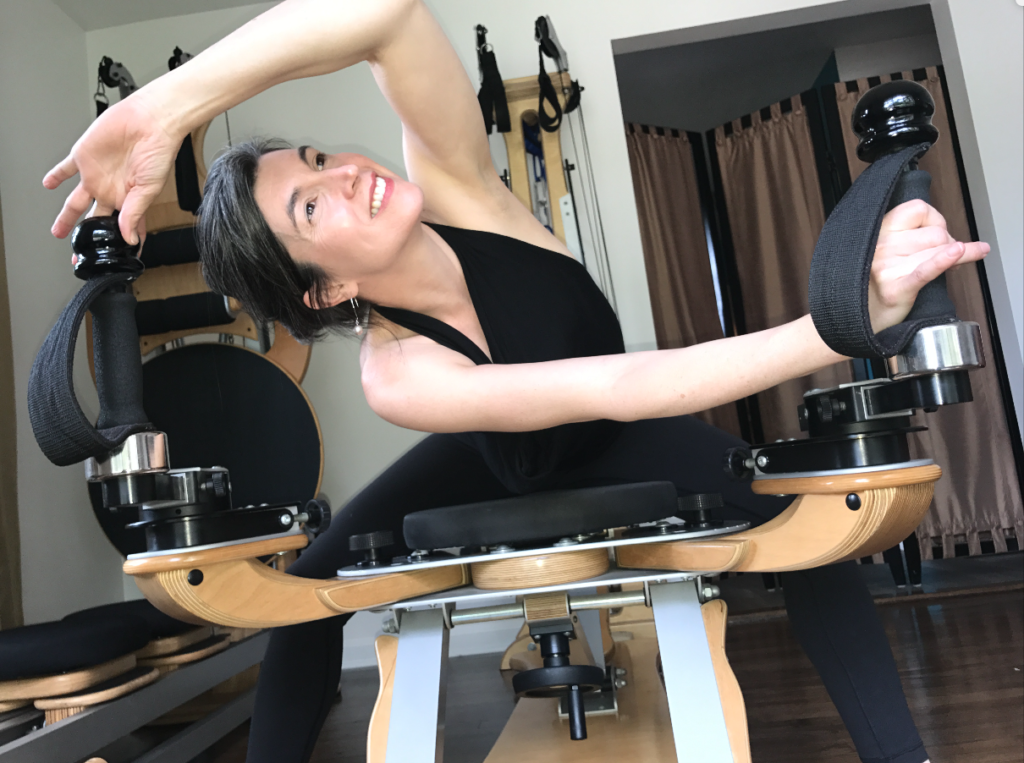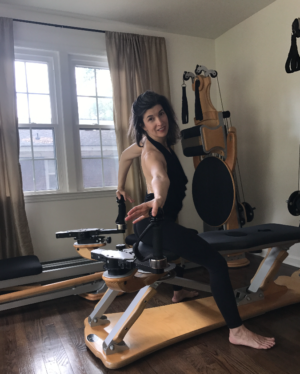Tips For Trainers, By Trainers: Working With Clients Who Have Suffered PTSD
Blog Content Tips for Trainers // August 02, 2017
By Holle Knowles, GYROTONIC® and GYROKINESIS® Trainer and Pre-Trainer
http://holleknowles.com/
As GYROTONIC® instructors, we have the privilege of becoming a trusted member of our client’s wellness support system. Along with the other professionals on their teams—therapists, doctors, counselors— we get to share in helping individuals create a fuller life.
One of the values that we can contribute is encouraging our clients to discover an embodied life, rich with movement, awareness, and presence. The Gyrotonic Method and the Gyrokinesis Method hold the possibilities of freedom of motion, increased strength, and renewed energy. And when a client has experienced trauma, using movement can help establish life-giving well being. Additionally, it can regulate the autonomic nervous system (ANS), resulting in pain relief and healing.
Clients that come to us with issues of chronic pain can be carrying physical effects from Post-Traumatic Stress Disorder (PTSD). In PTSD, the sympathetic nervous system (SNS) is charged, hypersensitive to feelings of threat that engage the body’s fight, flight or freeze response. The lack of feelings of safety after trauma—events characterized by an inability to protect oneself, or escape when trapped in a harmful situation—continue to trigger the SNS to pump cortisol and adrenaline into the system. In prolonged situations, this can cause muscular tension and cardiovascular distress.
The component of the ANS designed to govern our resting, restorative state is the parasympathetic nervous system (PNS). Ideally, we are to live most of our daily lives under the regulation of the PNS, drawing on the SNS only in moments needing heightened alert. In PTSD, one is primarily stuck in the activation of the SNS through feelings of fear. In helping our clients to re-engage the PNS, we help them return to a place where healing and regeneration are possible.

Photo provided by Holle Knowles
As an instructor, we can help clients encountering PTSD bridge the distance between the realities of the past and the possibilities of the present. Bessel van der Kolk, M.D., the founder and medical director of the Trauma Center in Brookline, Massachusetts, writes in his book The Body Keeps Score, “Being traumatized is not just an issue of being stuck in the past, it is just as much a problem of not being fully alive in the present.”
Movement during a Gyrotonic or Gyrokinesis session can provide a grounding force into the current moment, which is one of safety and potential. Additionally, movement can discharge the frantic fight or flight response of the SNS.
The instructor should use breathing to help draw the client’s awareness to the present. The breathing patterns, combined with Gyrotonic motions, stimulate the vagus nerve engaging the PNS. As the PNS reacts, heart rate slows, blood pressure lowers, and feelings of relaxation are possible. In the wake of this calm, cellular regeneration and healing can occur. Additionally, in this state, the bodily sensation of presence and security can be explored by guiding client attention to experience their physical responses to changes that are instigated through intentional breathing.
Shame and isolation are major components in the experience of PTSD. Your warm, non-judgemental support can begin to lift the veil of isolation that shame causes. It is often easy for a person with a background of trauma to internalize even small corrections as criticism and thus failure. This can shut people down to the methods, and even experiencing their own sensations during their session. It is crucial to allow the client freedom of exploration. Early sessions are often not the time to dictate the textbook way to execute a movement. Instead encourage the client in playfulness, particularly in relation to establishing the speed and rhythm of their movements.
Allowing the client to establish autonomy with their body is to encourage them to regain control of their body after having an out of control experience through trauma. As one regains control, a sense of agency is restored, giving the client awareness of influence over their own life and unseating the perpetual defeat of identifying exclusively as a victim.
Another way that you can help your client feel authority over their body is through your use of touch. Hands-on cueing needs to be respectful and intentional as it is with all of our clients.
Generally, a trainer should ask before touching the client, and it helps to describe what you will be doing and why. For example, “I’m going to place my hands on yours to give you some extra reach during this movement. See if you feel any change in your shoulder when I do…”. Give the client the opportunity to affirm that they are open to your touch.
Licia Sky, bodywork practitioner in conversation with Bessel Van Der Kolk, talking of her work with traumatized people offers, “I make firm, safe contact… It can be as strong as a handshake. The first place I might touch is their hand and forearm, because that’s the safest place to touch anybody, the place where they can touch you back.”
Using the Gyrotonic cues that involve touching hands, forearms, and shoulders are good places to begin establishing predictable, non-invasive support. As you do, invite the client to describe what they are experiencing in a specific part of the body. As you draw their awareness, you welcome them to inhabit that space, gently reclaiming self. Specific physical awareness also helps to ground the client in the present, which begins to break the hold of the past, establishing a new physical sensation of safety that one can begin to identify, and eventually re-create on their own.
Give opportunities for the client to tell you what they are experiencing in the moment: relaxation, relief, restriction. Welcome the client to talk about their current physical experience, but do not be afraid of silence in your session. When we go deeply back into our own personhood, it is an intimate experience with ourselves, and this internal awareness is more important than being able to express it.
 In our goal of long term health and freedom for the client, we give the gift of presence, offering our time, expertise and care in this moment, and holding space for them to be here with us in the present. This does not involve asking them to tell you their traumatic history, or probing into their past. We can let people share what they want to share, but overcoming one of the factors of PTSD—being able to trust one’s own judgement—means that often the client needs to be moving towards being able to identify a wider system of caring people, such as friends, family, counselors.
In our goal of long term health and freedom for the client, we give the gift of presence, offering our time, expertise and care in this moment, and holding space for them to be here with us in the present. This does not involve asking them to tell you their traumatic history, or probing into their past. We can let people share what they want to share, but overcoming one of the factors of PTSD—being able to trust one’s own judgement—means that often the client needs to be moving towards being able to identify a wider system of caring people, such as friends, family, counselors.
In this context, we do not press for their story; rather, we encourage them to use the new feelings of self-awareness and self-confidence, arising from inhabiting their own bodies, to choose when and with whom they want to share. Unless you are a licensed therapist, combining your other professional credentials with your Gyrotonic session at your client’s request, we do not present ourselves as counselors, but rather as safe professionals that are inviting them home into their bodies. Out of this “at home” experience, comfort and security develops.
When trauma occurs in the context of relationship, trust is destroyed, often including the ability to trust one’s self. This distance with self can lead to a sense of disembodiment. Peter A. Levine and Maggie Phillips write in their book, Freedom from Pain, “In order to recruit your body as your ally in securing freedom from pain, the first step is to learn how to communicate with your body so that you can create a healing, collaborative partnership. In other words, you will need to figure out how to shift your body from painful enemy to invaluable resource.”
Movement is life! In helping our clients inhabit themselves through movement, we are inviting them back to life. As they re-emerge from PTSD to intention, sensation, and embodiment, wholeness is possible.
To read more from Holle, or find information about her GYROTONIC® studio, please visit her website. You can also read her original article about movement and PTSD here.
Please note: While GYROTONIC® and GYROKINESIS® classes can compliment and support a professional PTSD treatment plan, if you have experienced trauma, your first course of action should be to seek help from a medical or counseling professional. Trainers in the Gyrotonic Method and the Gyrokinesis Method are not qualified counseling professionals, unless otherwise licensed or certified in the medical or counseling professions.
